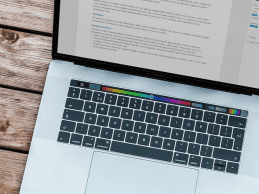
“Impactful brand storytelling is about how to look your audience in the eye, digitally.”
-Amelia Veale
We couldn’t agree more with Ms. Veale. You tell a better brand story when you see, really see, your audience. To meet your audience and foster a relationship with them, you need information—who, what, when, where, and why. You need data. Here’s how to tell a brand story with your data.
Research Your Audience
The key to telling a brand story is to understand your audience. Yep, just ask them instead of wondering or guessing what makes your audience tick. There are many options for conducting customer research, but we have our favorite. Enter: the customer survey.
You’ll get the answers you need, the information that will form the story arc of your brand story when you ask good questions. There are many different approaches to customer surveys, including demographics, psychographics, behavioral, user experience, and brand perception lines of inquiry. If you can pick just one, explore psychographics, as this information is a natural parallel to storytelling.
Psychographics explore perceptions, beliefs, challenges, pain points, values, desires, and interests. People typically buy with their hearts, not their minds (though there are exceptions), so it’s in your interest to speak to your audience’s hearts. Ultimately, your brand story will be far more compelling if you understand your audience on a deeper level.
Say you know the demographics of your audience. Great! But does knowing they’re middle class, Gen X, and male help you tell a brand story that connects with them on a deeper level? No, it does not. For that, you need to know that they’re worried about the bottom line because they’re trying to send their kids to university. Knowing they care about what their friends think and value honesty above all else helps infuse meaning into your brand story. Meaning breeds connection. And beyond that, if your audience feels like you get them, they’re more likely to pursue a relationship with your business.
Even if you don’t conduct a customer survey, you likely have access to all kinds of data—social media, Google Analytics, sales numbers, etc., that can inform your brand story. But you need to know how to draw insights from that data.
Translate Numbers Into Insights
So you have a bunch of data. Now, what do you do with it? First, you analyze it. Data analysis isn’t for everybody, and that’s okay. It’s always an option to outsource your audience research and data analysis. In the meantime, you can gather insights from your data by following a defined process for data analysis.
- Gather your data in one place, whether that’s one file, one folder, one report.
- Organize your data by areas of interest, such as all sales numbers from quarter one or survey questions related to demographics.
- Ask what each piece of data says about your audience and what it doesn’t say. Again, unspoken words can provide just as much insight.
- Cross-reference each piece of data with the data set as a whole. Are there themes? Are there contradictions?
- Ask whether your data confirms or contradicts your predictions. Take note of all instances.
- Get somebody else’s eyes on it. They may see something you didn’t.
- Check your biases. What might you be looking to confirm in the data? Conversely, what data are you ignoring because it disproves your assumptions or doesn’t fit the narrative?
- Make sure you’re not just jumping on the first juicy insight. There’s usually more to the story, and the whole story matters.
- Poke holes in the data. Why might this piece of data be wrong? What might you be failing to consider about the data? Yes, your sales numbers jumped last month, but was it really because of your new product launch or because you tweaked your social media ad strategy? Maybe the new product launch needs some additional attention.
- Let the data speak for itself.
Once you have a holistic view of your data, find your key takeaways and weave them into your brand story.
Connect, Connect, Connect
It’s easy to look at brand building as a hero’s journey, but that warrants a clarification. Your brand is more of the Merlin to King Arthur, Rafiki to Simba, the mittens to Bernie. Your target audience is the hero, the nucleus of your brand story. It all starts and ends with them. Because, hey, without them, your company wouldn’t be able to survive.
Sure, you can make your social media posts or blogs read like your favorite high fantasy novel if it fits your brand. But, whatever your brand identity, communication with your audience centers your audience; it’s an undercurrent woven throughout every logo you display on a website, every piece of copy you post, every phone call your sales reps have with a prospect.
Craft your brand story through interactions with your audience.
Who are the key players? What problem needs a solution? What conflicts do you encounter along the way? What does success look like? Let’s break that down.
Map Your Brand Story
Once you have a map for your brand story, you can start building your branding ecosystem, namely, all the pieces of information that reflect that story to your audience. What follows is a brand story exercise we like to utilize here at Brainchild Studios using a fun millennial favorite: avocado toast. Everything’s made up, and the points don’t matter (credit: Drew Carey).
Once upon a time, there was avocado toast.
Avocado toast could provide millennials with a satisfying, heart-healthy brunch or weekday breakfast to start the morning right.
Some people doubted it because it’s expensive and a major contributing factor to millennials’ inability to buy houses (this is a joke).
But then, one day, Big Avocado realized that creamy, mashed avocado toast was a salve for many of the issues millennials face and fueled them to take actionable steps to improve the world for themselves and future generations.
This means they needed to increase their production of avocados to meet the demand for avocado-based breakfast dishes.
And that matters because millennials deserve to have a spot of joy in a sea of reduced upward mobility, the burden of student loans, and stagnant wages.
Ultimately, avocado toast allows millennials to have the brunch of their dreams while fueling their bodies with healthy fats they need to change the world.
When you fill in the blanks and put the pieces together, you’ll have your story. Now you’re ready to tell it.
Check Your Biases
Sometimes you craft an incredible brand story, but it’s just not hitting the mark. In that case, it’s worth looking into sources of the disconnect. Allow us to recommend checking your and your audience’s biases. The data support the influence of cognitive biases in the world of brand building, which can detract from your story or, if you’re savvy, prove an opportunity to enhance your audience interactions.
Your audience is human, which means they’re subject to doing human things, such as focusing too much on the positive, being Negative Nancies, fixating on the most recent information, looking (subconsciously) for information that confirms their viewpoints, or buying products because it’s hip to do so. All of this can cause missed connections with your audience.
You can let it bum you out, or you can use it to your advantage. For example, if you know your audience is prone to the bandwagon effect, as we found during our Millennial Moms Research Survey, make reviews from people like them part of the story (and front and center on your website).
Build Your Brand With Data
While you can craft a perfectly compelling brand story without data, a truly engaging brand story comes from audience insights. Know your people, build your brand. From start to finish, audience research can direct your sales team, make your brand stand out, and expand and refine your customer base so that the work you do connects with the right people.
Investing in research can save your business money and time and give you the competitive edge you’re looking for. We’re in the business of audience research. Ready to talk? We’re just an email away: info@brainchildstudios.com.

Kiley
Founder & CEO
Kiley Peters is the Founder and CEO of Brainchild Studios, a boutique audience research, content strategy, and website creation agency primarily serving brands targeting Millennial Moms or business owners. She is also the Founder of the Work From Home Playbook, a series of online courses guiding aspiring entrepreneurial moms through the steps of starting a virtual business. She also launched the Brainchild Fund, a nonprofit initiative to support women and girls in business and entrepreneurship Follow her on Instagram.
more posts by Kiley →Related posts
-
 Content Marketing, Digital Marketing
Content Marketing, Digital Marketing -
 Content Marketing, Websites
Content Marketing, Websites -
 Small Business, SEO, Local SEO
Small Business, SEO, Local SEO -
 Content Marketing, Digital Marketing
Content Marketing, Digital Marketing -
 Audience Research, Content Marketing
Audience Research, Content Marketing -
 Audience Research, Content Marketing
Audience Research, Content Marketing






